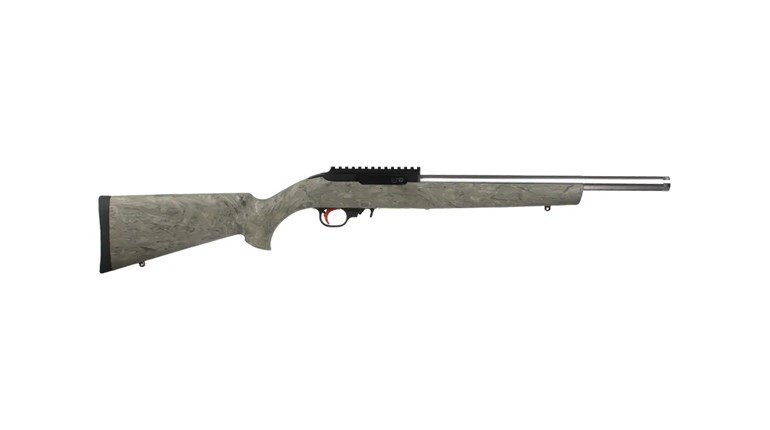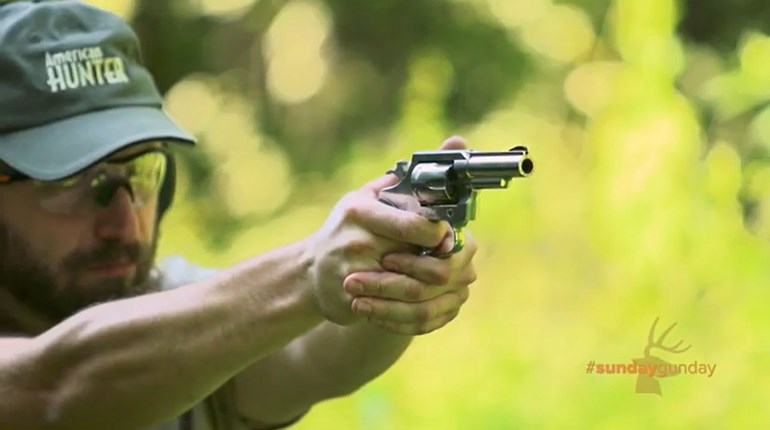
I did not intend to quit, but at the moment it was clear my legs and lungs hadn’t received the memo. I’d paused for an instant after turning downhill and my legs locked up, refusing to take another step. In the silence, after the bush I was thrashing stopped moving, I listened to great heaves of breath entering and exiting my lungs. Blood pulsed like a bass drum through my head. After I sucked wind long enough to wish this ordeal was over, I strode once, twice, three times downhill through the godforsaken vegetation and then it happened—again.
My pack was literally ripped from my body.

To make it through this mess I’d cinched tight the pack’s two shoulder straps, its sternum strap and its hip belt. I’d shoved a 32-ounce water bottle and some extra clothing in a stuff sack and secured the gear, along with my trekking poles, beneath the main compartment with two more straps because the pack wasn’t big enough to carry everything inside it. It wasn’t the first time I’d been undressed in this morass. This time, somehow the bush had unclasped the buckle of the hip belt and pushed the pack off my shoulders. Now it hung tightly around my chest, its weight wiggling downward with every heave of my chest because I couldn’t shrug it back up onto my shoulders. I felt moisture penetrating my trousers. It could’ve been blood for all I’d been through but I knew better. I struggled to reach back to assess the situation … and realized my water bottle had been plucked open by the infernal tentacles. The trickle running down my legs meant I had little water left to complete a hike now five hours old that seemed endless.
I won’t repeat what I said, but I will admit to pitching a fit.
■ ■ ■
That morning four of us—myself, fellow writers David Draper and Will Brantley, and our guide, Dan Rossiter, a home builder most of the year, a game guide during the high hunt season—were ferried into the backcountry of the South Island, not far from Wanaka, to spend perhaps three days hunting chamois the way New Zealand residents like to do it: on public land in the wild.
The pilot navigated smartly between steep, green mountainsides. We’d been airborne for perhaps 15 minutes when he landed alongside a creek in a tight mountain valley, where we unloaded our camping gear before alighting again to fly farther up-valley. Moments later Dan said, “There,” and the pilot landed lightly on a grassy saddle joining two peaks and we bailed. In about 20 minutes’ flight time we were whisked deep into a wilderness that would take me three days to reach on foot.
Seconds later the whump, whump, whump of the helo blades had died, and only the wind whistled. It was chilly. I marveled at our 360-degree view. It’s well known that movie director Peter Jackson, a Kiwi, judiciously mixed parts of New Zealand into his Hobbit films. It was easy to see why: If ever a landscape deserved to be likened to Middle Earth, this is it. I half-expected to see Orcs climbing toward us any moment.

It was late February, late summer for New Zealand. Everything was green, even at altitude, except the chamois. Soon they would put on their winter coats, turning from brown to black.
There are no predators in New Zealand. In fact no species is native to the nation except birds. All game hunted here has been imported. Chamois, a goat-antelope species of Europe that moves about its alpine environment with ease, were a gift from the Emperor of Austria, released on the South Island in 1907. The Kiwi population is the only free-ranging one outside Europe. Males may stand as tall as 30 inches and weigh about a hundred pounds. Their rut runs April-June. Other big game includes red stag, tahr, Sambar stag, pigs, whitetails, elk and even a few moose, which were thought to be extirpated until someone found bona fide hair samples in 2002. There are no seasons or bag limits; hunting occurs year-round, though it heats up in fall—late March around here. Game population estimates are sketchy; the best I’ve been able to learn is there are an estimated 250,000 head of “deer” of one type or another in New Zealand, and hunters take about 50,000 head per year—this in a country of 5 million inhabitants with about 100,000 hunters.
David, Will and I all had done the math in our heads: Somehow an equation including three hunters and two-and-a-half days just didn’t seem to add up to three chamois. But we all took spots on either side of the saddle to glass hopefully. We had come to New Zealand at the invitation of Bushnell to field-test three entirely new lines of sport optics. We all thought we knew about Kiwi hunting: mostly ranch hunting for big stags on vast estates. We all knew about backcountry hunts but hadn’t figured one was in the cards. Now, we all relished an opportunity to hunt free-range game.
I pulled the Bushnell Forge binocular to my face to scrutinize every inch of ground I could see. After a while the enormity of the landscape spurred me to muse.
“I can imagine a bunch over there,” I said to Dan, pointing to a bench below us. “It looks perfect. There’s plenty of grass over there. There’s water everywhere, too, even way up here. If I was a chamois that’d be a good place to lay up,” I continued. “It’s only a 300-yard shot, but look at the terrain: How do we get there?” Dan’s reply should have tipped me off to what lay ahead: “I’d just go get it.”
An hour later I hadn’t forgotten the exchange, and I was happy to join a conversation about three bucks that grazed hundreds of yards below us, and another that stood alone in the bottom of the ravine. The three below us were doable. We’d climb up to our right, swoop left across the hillside then drop down a finger that led us to a point above the bucks then maybe scoot down and up another finger or two to line up a shot.
We never dreamed we’d get three shots.
Forty minutes later Dan whispered, “The one on the left is pretty good. The two on the right, not so much. But we’d be crazy to pass up this chance. There are three of you, and there are three chamois. Range is 300 yards. What do you say?”
He got no complaint from us. We divvied up the take: Will would shoot the buck on the left, I’d shoot the one in the middle and David would shoot the one on the right at the count of “three.” Previously, I’d checked the bullet-drop compensating lines of the DOA LR800 SFP reticle in the Forge scope, and knew the 200- and 300-yard lines were good to go. And so I waited confidently as I placed the 300-yard-line of the reticle on the buck’s shoulder …
Now, I know what you’re thinking: That never works. Somebody always screws up, shoots first or doesn’t shoot at all. Except this time it worked. Just about simultaneously, three of us sent three 175-grain Federal Premium Edge TLR .30-caliber bullets downrange. David and I needed to send follow-ups, but the deed was done. In one day, we’d bagged three bucks when any one of us could have exited the backcountry empty-handed two days later.

We were elated, especially when Dan bragged about the choice cuts we’d eat around the campfire later. “Chamois are very good this time of year,” he explained. “The meat is very tender, sweet.” Our mouths watered.
Now, I know something else you’re thinking: We flew and shot on the same day—unthinkable in places like Alaska. We knew it; one or another of us referred to the fact. Finally, I either assuaged our guilt or portended our penance when I said, “We’ll pay for this on the hike out.”?
■ ■ ■
Pay for it we did. Camp lay down-valley, maybe 3 miles away—in fact we could have seen our gear if not for the terrain. But to reach it we would endure a hike the likes of which we could not possibly imagine.
Dan had hunted this valley before. “We’ll drop down off this ridge then follow the stream until it disappears down there,” he said, pointing down-valley to a brush-choked gorge. “From there it’s tough. It’s very steep. The vegetation is very thick. Last time I took the left side. It was horrible. This time we’ll take the right side. It’s got to be easier.”
Our descent vindicated my first-ever use of trekking poles. With them I plucked along slowly, surely, but still managed to trip and fall and slip and slide many times. After one particularly long sleigh ride, I was surprised my trousers still clung to my backside.
My knees were taxed, but plenty of climbing up, down and over boulders remained. Still, the alpine terrain was more forgiving than anything I’d covered in British Columbia in pursuit of mountain goats, and the hard ground suited me better than any spongy surface I’d trod in Alaska.
Then we got cocky. Dan and Will, in the lead, had just cleared a big boulder next to a feeder creek when a buck popped up before us. It must’ve been the buck we saw from on high. It must’ve bedded beneath the rock, and their passing stirred it.
“Shoot,” hissed Dan.
Will didn’t have a shot. I shrugged at David, he scrambled to pull his rifle from his pack … and I wondered whether I’d made a mistake until he fired. We cheered.

Thirty minutes later I had to admit to my companions I was worthless as a pack mule. Inside or strapped to my fanny pack I carried my photo gear, some extra clothing, what was left of my lunch, two water bottles, some extra ammo, a fire kit and little else. “If I’d known we’d do a wilderness hunt I’d have brought a better pack,” I said sheepishly.
No one complained, but I felt like a slacker when Dan stuffed more meat in his pack and we carried on. Along the way he kept reminding us of the “tough bit” that lay ahead. “I keep harping on it,” he said, “but it’s not as bad as it sounds; 40 minutes of tough going, maybe.”
The “tough bit” was a gorge formed by mountains on each side that squeezed to force a gentle alpine stream into a raging torrent. Level ground ceased to exist. We’d have to cross the stream (again), side-hill up-and-down through the “thick” stuff then see what lay beyond.
Dan broke trail—or at least tried. We all pretty much were on our own. Occasionally we caught glimpses of each other, cues as to which way to go next. There was a lot of trial-and-error; once Dan said, “Don’t come down here,” then said, “Come on down.” Mostly, we each kept to ourselves and endured.
The mountainside was covered in a bush that reminded me of rhododendron. Each plant was dense, and collectively the flora coated the hillside. “Thick” is an understatement. We didn’t so much as walk but wade through it—on a 45-degree slope. Often, my feet didn’t touch ground for yards at a time as I’d plant a foot on a root patch, check its sturdiness then stretch to grab another plant to pull myself a yard or two then repeat.
A slip meant a 20-yard ride downhill, or worse—sometimes I couldn’t see the bottom and didn’t want to think about consequences. There was a lot of slipping and sliding and falling and thrashing and cursing.
It was at this point I pitched a hissy-fit.
I struggled to unbuckle the sternum strap, and when it popped my gear fell into the trickle of a stream beneath me and I hissed. I was already soaking wet from sweat. Now the last of my water was dribbling down my leg. I felt like a kid. I couldn’t wait to see what lay beyond this stretch but I couldn’t help wish this ordeal would end. Everyone was hauling extra weight but me. Worse, I’d given my rifle to Dan when we entered this mess because there was no way to secure it to my pack or wear it around my neck without strangling myself, and I needed both hands free to climb and wade.
I noticed one of my trekking poles was missing. This whole thing was getting old. Hell, I realized I was the oldest guy there. I knew the pole couldn’t be far back uphill and so I started to climb then blurted, “Son, it’s gone.”
Six hours and 5.5 miles after we stepped off, we straggled into camp beat to hell.
Our gear was beat to hell, too. I’d used my Savage Accufit rifle as a crutch more than once. It’d bounced off rocks, taken many sleigh rides with me and endured numerous stream crossings, and it looked 30 years old. So did the Bushnell Forge scope atop it. No other hunter or piece of gear had fared much better, but we all were cheered by a fire, fresh water and the freedom of moving about barefoot as we air-dried in the setting sun.

At camp we had three days of food cached, and coffee and tea and more (including alcohol). But all any of us wanted was a taste of what brought us to this point: chamois.
That night, David cut strips of chamois backstrap, I breaded them and Will fried them in butter on a pan over low heat by our small fire. We drank several beers as cocktails, polished off a bottle of wine with dinner and toasted our feat with two flasks of whiskey. That’s all we ate or drank: five chamois backstraps, a dozen beers, a bottle of wine and two flasks of whiskey. We felt like kings. Or men. Orcs, maybe.
■ ■ ■
There are epilogues to every story, and this one is no different.
We were ferried out the following day then spent a day-and-a-half pursuing stags, to no avail. None of us minded the fruitlessness. My experience with the endeavor leads me to say a stag hunt on a private sheep station in New Zealand is no walk in the park. At times we traversed even steeper terrain than we encountered in the backcountry. I am no stranger to alpine hunting, but the fall one would take should he slip—sometimes a thousand feet down a grassy mountainside—made me swoon. At times I refused to move without maintaining three points of contact with the ground.
Three days later, while kneeling on level ground and aiming uphill 220 yards, I used the same Savage rifle and Bushnell Forge riflescope (untouched) to take a bull tahr with one shot, casting aside any worry “The Middle Earth Torture Test” might’ve wreaked on the Forge riflescope.
Two weeks later, at home, chest pains were leading to sleeplessness. I was sure they didn’t signal a heart attack, but eventually I was forced to call my doctor. The diagnosis was costochondritis, an inflammation of the cartilage that connects your ribs to your breastbone. There is no cure but time. And 500mg of naproxen twice a day to tamp down inflammation and pain. It had to be caused by the stress of that hike. It was a reminder that I was the oldest guy in the field that day—a fact I am growing weary of encountering.





































